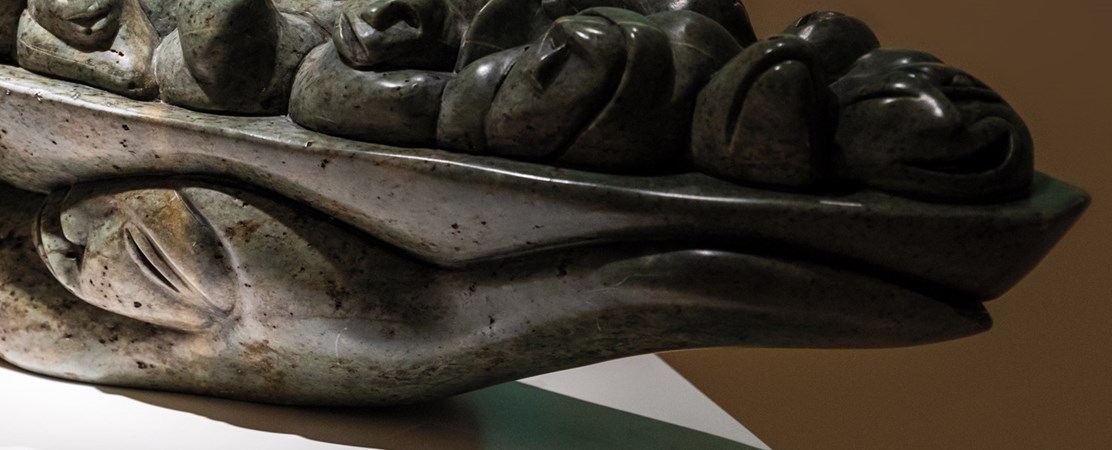Worlds in Motion – The National Museums of World Culture, Sustainability and the Future

By Sofie Öberg Magnusson, Administrative Officer and Sustainability Coordinator and Martin Schultz, Curator North America and the Arctic, The National Museums of World Culture
In the public mind, museums are sometimes narrowed down to object-filled exhibition spaces and guided tours. Yet, museums have always had a more profound significance for society and have the potential to be essential resources in the transmission to a sustainable future. To shoulder such a role, however, museums need to be climate smart.
The Swedish national museum agency National Museums of World Culture (Statens museer för världskultur, SMVK) strives for a wholistic approach, in which all aspects of museum work are addressed, from energy use to public outreach.
Outer Worlds
The mission of the National Museums of World Culture is to showcase and bring to life the cultures of the world, particularly those originating outside of Sweden. The agency documents and illuminates the conditions and forms of expressions of other cultures as well as interaction between cultures and cultural variation – historical and modern, national and international. SMVK also promotes interdisciplinary knowledge enhancement and various forms of public activities.
With their exhibitions, museums all over the world draw attention to sometimes pressing topics of the time. The aim of the current Human Nature exhibition at Världskulturmuseet in Gothenburg is to encourage action in protecting our planet for future generations. The exhibition discusses the impact humans have on the Earth's ecosystems, and specifically mass consumption and its various effects on the planet. A platform for educators connected to it, Human Nature Skola, has been shortlisted by the Swedish Museums Association for their annual pedagogical price.
As another example, SMVK addresses climate change and in particular the situation in the Arctic through the exhibition Voices from the Arctic. Showcased at Världskulturmuseet in 2019, it was developed in collaboration with the Museum Cerny Inuit Collection in Bern, a museum with a focus on contemporary Inuit art reflecting climate change.
Inner Worlds
The production of exhibitions and many programs for a wider audience are energy-intense and produce waste. In the past, this has not been a topic addressed by museums. Awareness was rising for the first time with increasing energy costs that forced museums to think about saving electricity and water.
At SMVK, the focus on sustainability is accessible to our visitors through exhibitions, public events and program activities. But we also work actively behind the scenes to continuously evaluate and improve the social, environmental and economic accountability in our purchase and procurement processes, energy efficiency, transports, travel, and how we handle our material resources and dispose of our waste. We are committed to the UN Sustainable Development Goals and aim to incorporate them in all parts of SMVK. To reach out through the organization and carry out strategies and actions, we have set up a task force consisting of representatives from the different departments. These representatives act as a link between the operations of their departments and the decision-making. Sustainability coordinators incorporate the viewpoints of the departments in the recommended goals and activities to the management, which makes the process transparent and anchored.
Future tasks will include rethinking pest management and introducing more energy efficient ways to store collections. Less than 10% of our collections are currently visible in exhibitions, and to remain relevant, collecting is crucial. New materials might also need new ways of storing and perhaps treatment. The field of collections management is undergoing quick and enormous changes, and implementing sustainability is one of the key tasks.
Future Worlds
What can climate-friendly museum work look like? How can the use of energy, packaging material and the like be reduced? The museums are answering these questions through cooperation with other museums and international experts. For example, in the Museums and Sustainability conference in September 2019, we explored different approaches such as using collections as a "climate archive", and how to implement routines for reusing materials, thus prolonging the life of the resources and decreasing waste. The need for further development and a will to exchange experiences and collaborate was unanimously agreed on. We need to act, and we need to learn and develop expertise.
Sustainability has become an integral part of education and reached our everyday life in many visible and invisible ways. We need to turn our concern about the environment and the future of our planet into a new form of intangible cultural heritage – for a bigger, more humane and more inclusive world.
